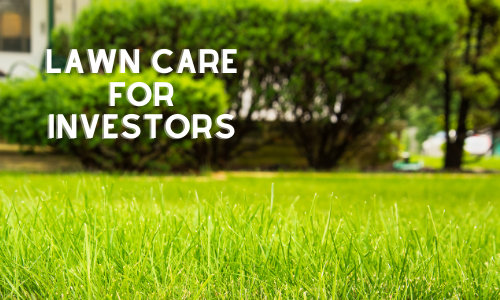When you rent a property with a lawn, who is responsible for mowing the lawn, you or your tenant? What about ventilation, drainage, and fertilization? What do you do when a tenant wants to put something in a vegetable plot or garden? Here are some great tips to help you get started. You can avoid headaches by using these 5 important tips.
1) Put Tenant’s Lawn Care Responsibilities in the Rental Agreement
As an owner, the last thing you need to devote your time to is mowing, trimming, and raking your tenants’ lawns. In this case, you must specify exactly in the tenancy agreement which lawn care work the tenant is responsible for. Ensure that tenants have the tools needed to complete these lawn care tasks in accordance with the lease agreement. You can also ask tenants to rake leaves in the fall and be responsible for clearing snow from driveways and porches in winter.
2) For Specialty Projects Use a Lawn Care Company
It is one thing to ask the tenant to mow the grass and rake the leaves. It’s another matter to ask them to spend the weekend aerating and cutting down tree limbs with powered lawn equipment. If you want to perform special tasks such as fertilizing your lawn, aerating, cutting trees, seeding your lawn, hire a lawn care company.
Your tenants possibly don’t have the time, money, or willingness to do it themselves, so you might as well make sure they can keep their living space in a livable condition. Invest in a high-quality property management system that not only will allow for more streamlined and efficient communication with your tenants but will also give them the ability to submit maintenance requests from their phone or computer.
3) If You’re Taking on Lawn Care Yourself, Minimize Grass
It can be tough to take care of your yard with lots of grass. It’s often best to cut down on how much grass you have, so it’ll be easier for you to maintain your lawn. Native plants, topography, weed control fabric, ground cover, cobblestones, and even artificial turf can greatly facilitate the maintenance of landscaping and lawns in rental properties.
4) Set Guidelines for Tenants Who Want to Garden
Many tenants who move into single-family houses with adjacent lawns want to arrange vegetable or flower gardens. Gardening tenants can greatly improve the attractiveness of a rented home, especially if they insert perennial plants, trees, and shrubs. However, the expectations and requirements for tenants who want to build a garden should be clarified.
Check which invasive plants do not allow tenants to plant on the rented property and include them in the lease agreement. When deciding whether to allow tenants to place permanent plants and landscaping, consider any HOA rules that govern your property and give tenants clear guidelines – again set out in the tenancy agreement – about where and how to plant them.
5) Set Aside a Section of Lawn for Tenants’ Pet Needs
You can always prevent dogs from damaging the lawn of your rental property by prohibiting pets. Nevertheless, pet owners also need a place to live. If you decide to rent to a tenant who owns a pet, please leave a specific area outside for pets. This is much easier than asking tenants to flush the grass every time the dog urinates outside. Although you should ask tenants to pick up after their animals and charge a fee for tenants that do not comply.
Conclusion
When you are a landlord, you don’t have time to take care of the tenant’s lawn. But you need to keep these lawns well maintained to attract future tenants. Make sure your tenants are well-aware of their responsibilities in regards to caring for the outdoor space of the property. Ensure that you have clear expectations and guidelines for them to follow, as this will help both you and your tenants be able to enjoy the outdoor space of your rental property.

